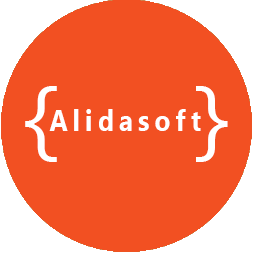Architecting on AWS
A Comprehensive Guide for Aspiring Cloud Architects
Introduction
Embarking on the journey of architecting solutions on AWS (Amazon Web Services) is a significant step for cloud computing enthusiasts. This guide aims to provide prospective AWS cloud computing students with a deep dive into the principles, best practices, and key considerations for architecting robust solutions on the AWS cloud.
Understanding AWS Architecting: A Holistic Approach
AWS Architecture Essentials
Before diving into the technical aspects, it’s crucial to grasp the fundamental principles of AWS architecture:
- Scalability: Designing systems that can handle growth.
- Reliability: Ensuring a system operates consistently and predictably.
- Security: Implementing measures to protect data and systems.
- Performance Efficiency: Optimizing performance based on requirements.
AWS Well-Architected Framework
Overview and Importance
The AWS Well-Architected Framework is a cornerstone for building secure, high-performing, and resilient infrastructures. Key pillars include:
- Operational Excellence: Running and monitoring systems.
- Security: Protecting data, systems, and assets.
- Reliability: Ensuring a workload performs its intended function.
- Performance Efficiency: Using resources efficiently.
- Cost Optimization: Avoiding unnecessary costs.
Design Principles
Foundational Concepts for Architects
When architecting on AWS, certain design principles guide the decision-making process:
- Decompose Your Application: Break down your application into smaller, loosely coupled services.
- Automate Everything: Embrace automation for scalability and efficiency.
- Think Parallel: Design for horizontal scalability to handle increased load.
Key AWS Services for Architects
EC2, S3, Lambda, and More
Understanding and effectively utilizing key AWS services is pivotal:
- EC2 (Elastic Compute Cloud): Virtual servers in the cloud.
- S3 (Simple Storage Service): Scalable object storage.
- Lambda: Serverless computing for executing code without managing servers.
Networking Best Practices
Architecting for Connectivity
Networking is the backbone of any architecture. Key considerations include:
- Amazon VPC (Virtual Private Cloud): Isolating resources and controlling network settings.
- Route 53: AWS’s scalable domain name system (DNS).
Security in AWS Architectures
Implementing Robust Security Measures
Security is a top priority. Best practices include:
- Identity and Access Management (IAM): Managing access securely.
- Encryption: Protecting data at rest and in transit.
Cost Management Strategies
Optimizing Costs Without Compromising Quality
Architects need to balance performance with cost efficiency. Strategies include:
- Reserved Instances: Planning for predictable workloads.
- Spot Instances: Utilizing spare compute capacity at a lower cost.
Conclusion
Architecting on AWS is a multifaceted task that requires a deep understanding of not just AWS services but also the principles and best practices that underpin a well-architected solution. This guide has provided a holistic view, covering foundational principles, the Well-Architected Framework, design principles, key AWS services, networking, security, and cost management.
Summary
- Understanding AWS Architecting: Grasping scalability, reliability, security, and performance efficiency.
- AWS Well-Architected Framework: Exploring its pillars and importance.
- Design Principles: Decomposing applications, embracing automation, and thinking parallel.
- Key AWS Services: EC2, S3, Lambda, and more.
- Networking Best Practices: VPC, Route 53, and connectivity considerations.
- Security Measures: IAM, encryption, and robust security practices.
- Cost Management: Optimizing costs with strategies like reserved and spot instances.
Embark on your AWS architecting journey armed with these insights, and build scalable, reliable, and secure solutions on the cloud. Happy architecting!

